The 30 Best Places to Live in Vermont: Guide To Top Communities

Vermont’s distinctive blend of rural charm and progressive values creates unique communities that attract residents seeking quality of life over urban intensity.
The Green Mountain State offers small cities and towns where outdoor recreation meets cultural sophistication, from ski resort communities to college towns nestled in scenic valleys.
Choosing the right Vermont community depends on priorities like proximity to outdoor activities, school quality, cost of living, and access to employment centers.
Some residents gravitate toward Burlington’s urban amenities and Lake Champlain waterfront, while others prefer smaller towns like Stowe or Middlebury that balance recreation with community character.
The state’s compact size means most locations provide reasonable access to both wilderness areas and regional economic hubs.
Here are the 30 best places to live in Vermont:
30. Weston
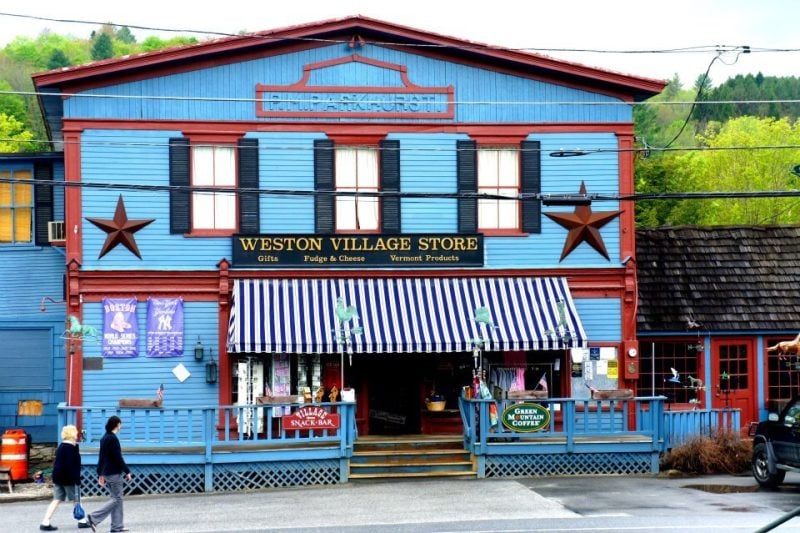
Weston is a small town in Windsor County with a population of approximately 700-769 residents. The community maintains a rural character where most residents own their homes.
The town has earned recognition for its exceptional quality of life, receiving an A+ ranking from BestPlaces.net. Weston was ranked as the number one safest town in Vermont.
Home prices in Weston exceed Vermont’s state average of $260,894, reflecting the desirability of the area. The higher cost reflects market demand for this sought-after location.
Residents enjoy access to local amenities including cafes, antique stores, and a public library. The town attracts many retirees who appreciate its peaceful atmosphere.
Weston’s public schools perform above average compared to state standards. The community tends to lean liberal politically and offers residents a tight-knit small-town experience.
29. Richmond
Richmond sits in Chittenden County with a population of 675 residents. The town offers a sparse suburban atmosphere that attracts young professionals seeking a quieter lifestyle.
Most residents rent their homes rather than own. The community tends to lean liberal in its political preferences.
Richmond’s location at the foot of Mount Mansfield provides access to outdoor recreation opportunities. Residents can enjoy hiking, skiing, and other mountain activities throughout the year.
The town maintains its small-town character while being part of Chittenden County. This location provides residents with access to larger metropolitan amenities when needed.
Richmond home prices exceed Vermont’s state average of $260,894. The higher cost reflects the area’s desirability and location near recreational areas.
The community attracts people who value outdoor access and small-town living. Young professionals particularly find the area appealing for its balance of rural charm and modern conveniences.
28. Ludlow
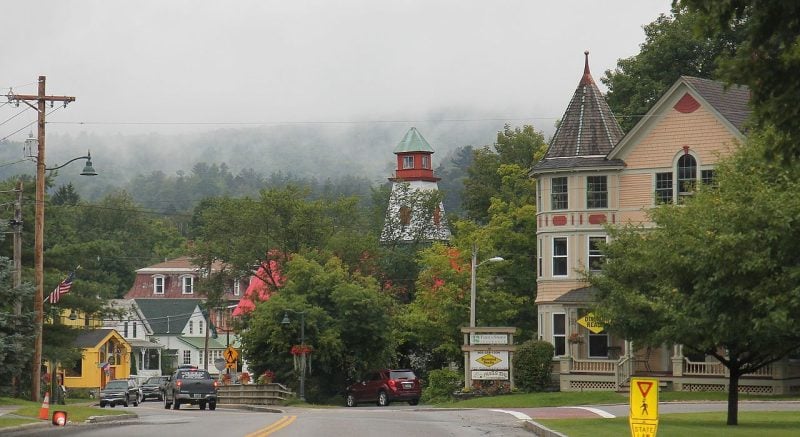
Ludlow sits in Windsor County and earns an A+ ranking for overall livability. The town combines low crime rates with reasonable living costs, making it attractive to various residents.
The median home price reaches $498,800, with home appreciation climbing 15.3% over the past year. Housing prices align closely with Vermont’s state average of $260,894.
Crime rates remain extremely low throughout the community. This safety record contributes significantly to Ludlow’s high desirability rankings among Vermont towns.
The cost of living stays manageable compared to other Vermont locations. This affordability attracts budget-conscious residents seeking quality small-town living.
Ludlow offers access to Vermont’s outdoor recreation opportunities while maintaining a tight-knit community atmosphere. The town provides essential amenities without the congestion of larger urban areas.
27. Northfield
Northfield offers residents small-town charm in Vermont’s scenic Washington County. The community features rolling hills and mountain views that provide excellent hiking and biking opportunities.
Home prices in Northfield remain below Vermont’s state average of $260,894. This affordability makes the town attractive to families and retirees seeking value in their housing investment.
The town receives a livability score of 72 out of 100 and ranks 17th among Vermont municipalities. Northfield earns strong marks for cost of living, education, healthcare, and safety metrics.
Outdoor enthusiasts appreciate the numerous trails and natural areas surrounding the community. The rural Vermont setting provides a peaceful environment while maintaining access to essential services and amenities.
Northfield ranks 50th out of 80 Vermont locations for young professionals, indicating it may better suit families and older residents seeking tranquility over career opportunities.
26. Morristown
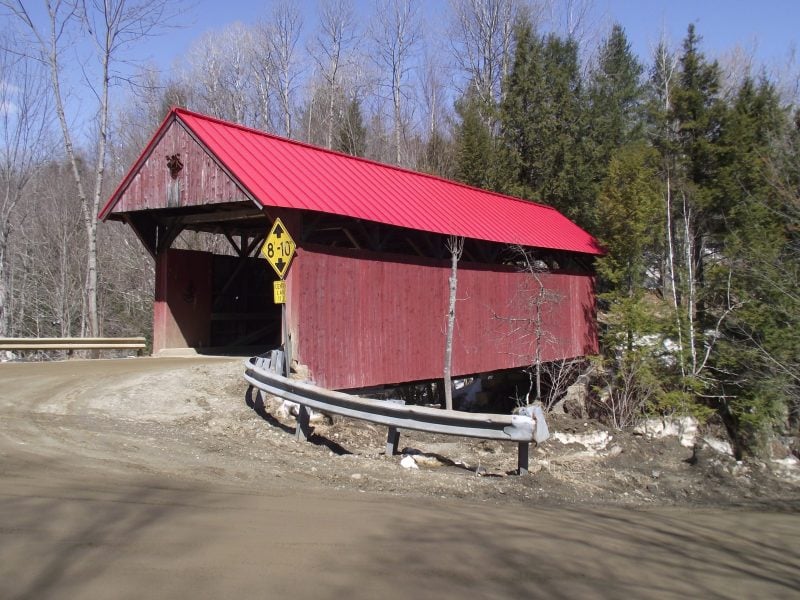
Morristown sits in Lamoille County with a population of approximately 5,600 residents. The town offers a sparse suburban feel in Vermont’s scenic Green Mountains region.
Most residents own their homes in this peaceful community. Young professionals and retirees make up a significant portion of the population, creating a diverse age mix.
The town provides access to quaint local shops and restaurants. Outdoor enthusiasts can enjoy nearby swimming holes and rivers during summer months.
Morristown’s public schools rank above average compared to other Vermont districts. This makes the area attractive to families with school-age children.
The community leans liberal politically and maintains a quiet, rural atmosphere. BestPlaces ranked Morristown as number 41 out of 200 small towns nationwide for livability.
Residents appreciate the town’s combination of natural beauty and small-town charm. The location provides easy access to Vermont’s outdoor recreation opportunities year-round.
25. Berlin
Berlin sits in Washington County with a population of 2,871 residents. The town offers a suburban rural mix that attracts many retirees and families seeking quieter living.
Most residents own their homes in this small community. The area leans politically liberal and maintains strong community connections.
Berlin’s location in northern Vermont provides access to the Green Mountains’ rolling hills. Picturesque farms surround the town, creating scenic countryside views.
The public school system performs above average compared to state standards. This makes Berlin appealing to families with school-age children.
The town combines small-town charm with reasonable access to larger Vermont cities. Residents enjoy the peaceful atmosphere while staying connected to regional amenities and employment opportunities.
24. Swanton
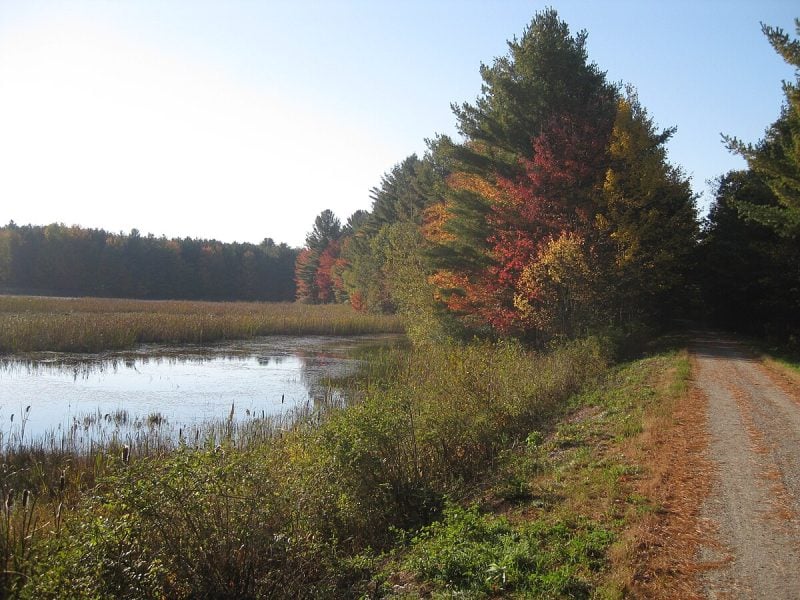
Swanton sits in northwestern Vermont along the eastern shore of Lake Champlain. This small town has a population of approximately 2,450 residents and serves as a suburb of Burlington.
The community offers a peaceful alternative to city living while maintaining access to modern amenities. Residents describe the local population as warm and friendly, with neighbors willing to help when needed.
Swanton’s poverty rate stands at 10.3%, which falls below the national average. The typical household earns $55,868 annually, though this figure remains lower than the national median of $67,500.
The town features small businesses and scenic landscapes that attract visitors. Housing quality varies significantly throughout different neighborhoods within Swanton.
Educational attainment levels show that 10% of adults hold bachelor’s degrees, while 28% have some college experience. The unemployment rate of 7.6% exceeds national averages.
23. St. Albans
St. Albans is a charming town in Franklin County with a population of 6,910 residents. The community offers a dense suburban atmosphere where most residents own their homes.
The town attracts many families and young professionals seeking a balanced lifestyle. St. Albans provides easy access to outdoor recreation in Vermont’s Green Mountains region.
Downtown St. Albans features local shops and restaurants that serve the community. The area includes lakefront parks and beaches for recreational activities.
St. Albans stands out as one of Vermont’s more diverse communities. The population includes approximately 22% African American, 7% Hispanic or Latino, and 8% Asian residents.
The town receives a livability score of 73 out of 100 points from BestPlaces. This rating reflects St. Albans’ appeal as a place to live and work in Vermont.
22. Newport
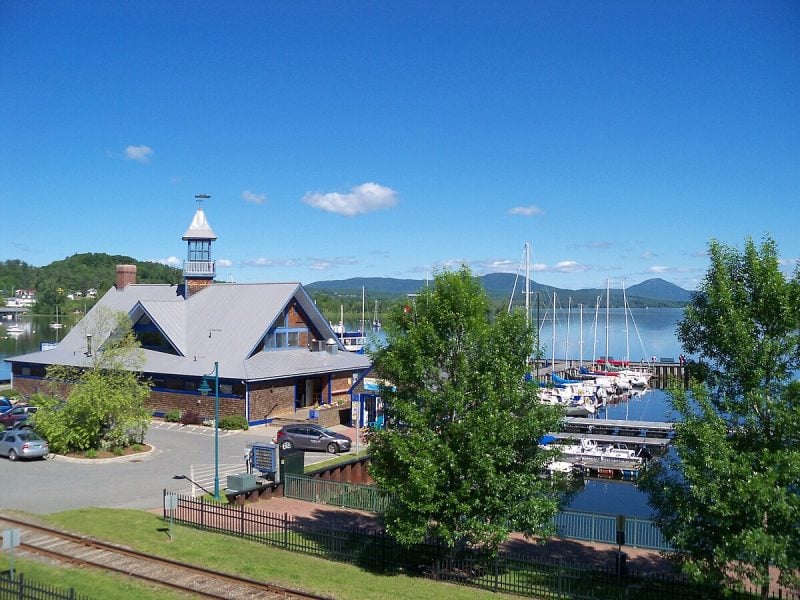
Newport sits in Orleans County with a population of 4,413 residents. The city offers a sparse suburban atmosphere where most residents own their homes.
Home prices in Newport remain significantly below Vermont’s state average of $260,894. The typical household earns $37,500 annually, which falls below the national median income.
Newport ranks 19th out of 80 places for lowest cost of living in Vermont. The city also ranks 34th out of 80 for young professionals seeking affordable options.
The poverty rate stands at 15.4%, which exceeds the national average by 10%. Many families choose to live in Newport despite economic challenges.
AreaVibes gives Newport a livability score of 57 out of 100. This places the city in the 29th percentile among all American cities for overall quality of life factors.
21. Springfield
Springfield ranks as a notable place to live in Vermont with a population of 3,882 residents. The town sits in Windsor County and offers a dense suburban atmosphere where most residents own their homes.
Families particularly gravitate toward Springfield due to its excellent school system and low crime rate. The community provides a safe environment for raising children while maintaining strong educational standards.
Home prices in Springfield remain much lower than Vermont’s state average of $260,894. This affordability makes homeownership accessible for many residents seeking quality housing options.
The town features diverse shopping and dining establishments, including local craft breweries and specialty coffee shops. These amenities contribute to Springfield’s appeal as a livable community.
Springfield receives a livability score of 67 out of 100, ranking it 37th within Vermont. Residents tend to lean liberal politically and enjoy the town’s welcoming atmosphere.
20. White River Junction
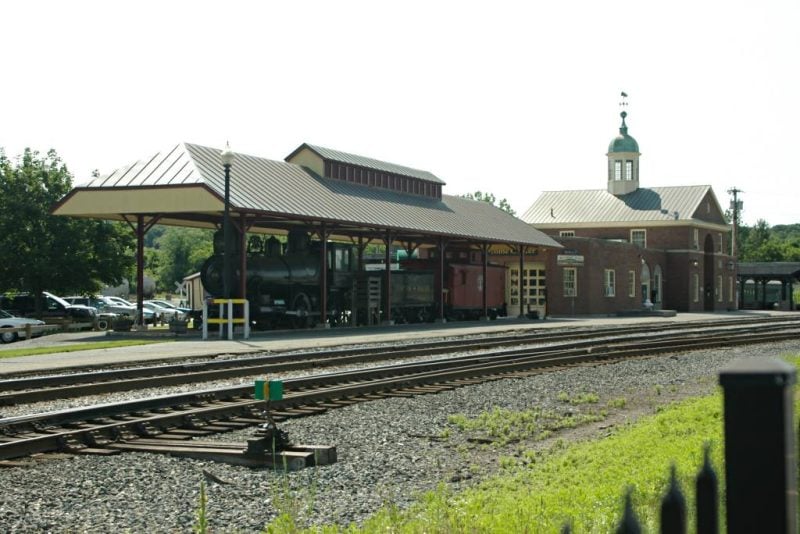
White River Junction sits in Windsor County with a population of approximately 2,800 residents. The town offers a dense suburban feel where most residents rent their homes.
The community attracts young professionals and retirees who appreciate the area’s liberal-leaning atmosphere. Public schools perform above average compared to state standards.
BestPlaces ranks the town highly for livability, giving it an 8 out of 10 score. This rating reflects strong performance in cost of living, crime rates, education, and housing options.
Home prices align closely with Vermont’s state average of $260,894. The poverty rate stands at 12.3%, which is 12% lower than the national average.
The typical household earns $45,000 annually, below the national median. White River Junction provides residents access to both rural charm and urban conveniences in the Connecticut River Valley.
19. Waitsfield
Waitsfield sits in Washington County with a population of 1,825 residents. The town offers a suburban rural atmosphere where most residents own their homes.
The community is located just miles from three major ski resorts: Sugarbush, Sugarbush North, and Mad River Glen. This proximity makes it attractive for winter sports enthusiasts.
Home prices in Waitsfield exceed Vermont’s state average of $260,894. The higher cost reflects the desirable mountain location and recreational amenities.
The town provides access to outdoor activities year-round. Rolling hills, forests, and lakes surround the area, creating scenic views for residents.
Waitsfield’s public schools receive high ratings. The community tends to lean liberal politically and maintains a close-knit feel despite its rural setting.
The town ranks fourth in Vermont for cost of living with an index rating of 85.9 out of 100. This makes it more affordable than many comparable mountain communities.
18. Johnson
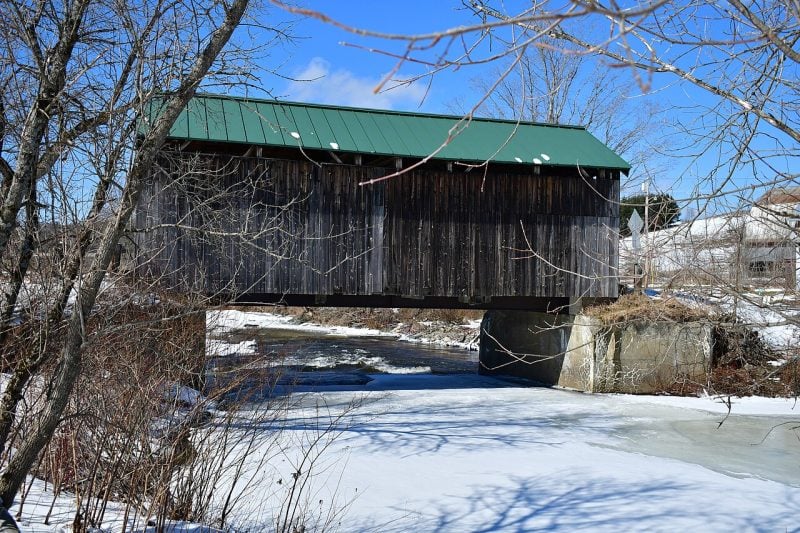
Johnson sits in Lamoille County with a population of 3,467 residents. The town offers a suburban rural mix that attracts young professionals seeking a quieter lifestyle.
Most residents own their homes in this community. The area tends to lean liberal politically and maintains a close-knit feel.
Housing costs in Johnson remain below Vermont’s state average of $260,894. This affordability makes it accessible for first-time buyers and those seeking value.
The town faces economic challenges with a poverty rate of 30.4%. The typical household earns $33,214 annually, which falls below the national median.
Johnson provides access to outdoor activities and Vermont’s natural beauty. The location offers a balance between rural living and modern amenities for residents seeking both.
17. Norwich
Norwich ranks as one of Vermont’s premier family destinations in the scenic Upper Valley region. The town combines natural beauty with excellent amenities that attract residents seeking quality living.
Families particularly value Norwich for its outstanding public schools and low crime rates. The community receives an A+ rating for safety, making it ideal for raising children.
The median home price reaches $754,985, reflecting the area’s desirability and premium location. While housing costs exceed state averages, transportation expenses run 30.5% below national figures.
Natural recreation opportunities abound with rolling hills, woodlands, and river access. Residents enjoy skiing, hiking, fishing, and kayaking throughout the seasons.
Downtown Norwich features charming local businesses including bakeries, shops, and restaurants. The walkable area creates a welcoming atmosphere for both residents and visitors exploring the community.
16. Waterbury
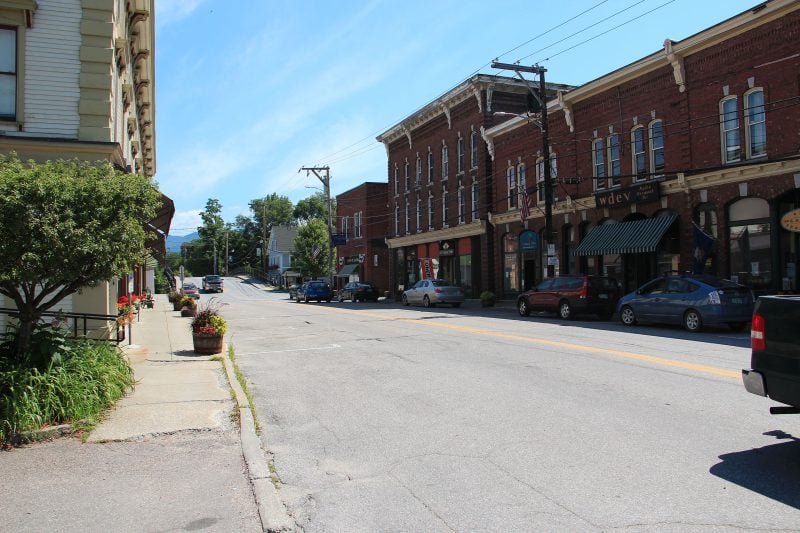
Waterbury sits in the heart of Vermont’s Green Mountains with a population of 1,728 residents. The town offers picturesque mountain scenery with rolling hills and stunning views of surrounding peaks.
Located along the interstate, Waterbury provides easy access to Burlington and neighboring communities. Most residents rent their homes in this dense suburban environment.
The community attracts many young professionals who appreciate the liberal-leaning atmosphere. Public schools in Waterbury perform above average compared to state standards.
Outdoor recreation defines much of Waterbury’s appeal throughout the year. Residents enjoy skiing, hiking, and fishing opportunities in the surrounding mountain landscape.
Home prices in Waterbury align closely with Vermont’s state average of $260,894. The town’s location and amenities make it a desirable place for those seeking small-town mountain living with urban accessibility.
15. Winooski
Winooski offers an urban suburban mix within just one square mile in Chittenden County. The city attracts young professionals with its vibrant community atmosphere and liberal-leaning population of approximately 8,200 residents.
Most residents rent their homes rather than own. The city features numerous restaurants and parks for recreational activities.
Winooski’s strategic location borders Burlington, Essex, Colchester, and South Burlington. This positioning provides easy access to Lake Champlain and the broader Burlington metropolitan area.
The city maintains good public transportation options and walkable amenities. Historic charm combines with modern conveniences throughout the neighborhoods.
Financial considerations include a poverty rate of 22.5%, which exceeds national averages. The typical household earns $56,236 annually, below the national median income.
Housing quality varies significantly between different neighborhoods within the city. The compact size creates a close-knit community feel for residents.
14. Vergennes
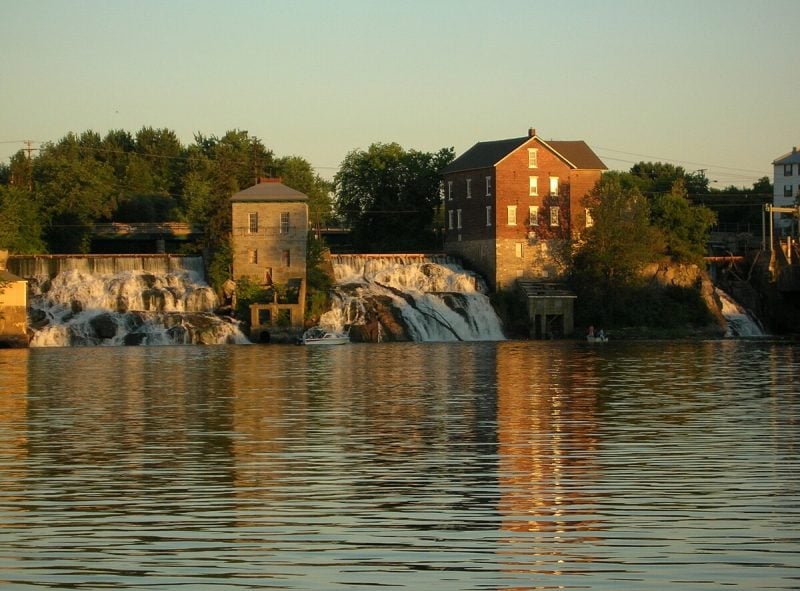
Vergennes stands out as Vermont’s smallest city, located in scenic Addison County. This historic community combines small-town charm with modern conveniences.
The city ranks 9th among Vermont’s best places to live according to BestPlaces. Vergennes earned a livability score of 72 out of 100, placing it in the 84th percentile compared to other cities.
Residents enjoy diverse dining options and recreational activities throughout the year. The city provides solid educational opportunities for families with children.
Vergennes offers reasonable housing costs compared to larger Vermont cities. The downtown area features local shops and businesses that serve the community.
The city attracts young professionals and families seeking a quieter lifestyle. Crime rates remain relatively low, contributing to the area’s appeal for safe living.
13. Brattleboro
Brattleboro stands out as one of southern Vermont’s most vibrant communities. The town has a population of 12,152 residents and sits in Windham County near the Connecticut River.
The community offers a dense suburban atmosphere where most residents own their homes. Young professionals and retirees make up a significant portion of the population, creating a diverse demographic mix.
Brattleboro attracts residents who appreciate its liberal-leaning culture and artistic scene. The downtown area features galleries, theaters, and local businesses that contribute to the town’s creative energy.
Housing quality varies considerably throughout different neighborhoods in Brattleboro. The real estate market reflects this diversity with options ranging from affordable to premium properties.
The town provides good access to outdoor recreation opportunities typical of Vermont. Residents enjoy proximity to hiking trails, skiing areas, and the natural beauty of the Green Mountain region.
12. Bennington
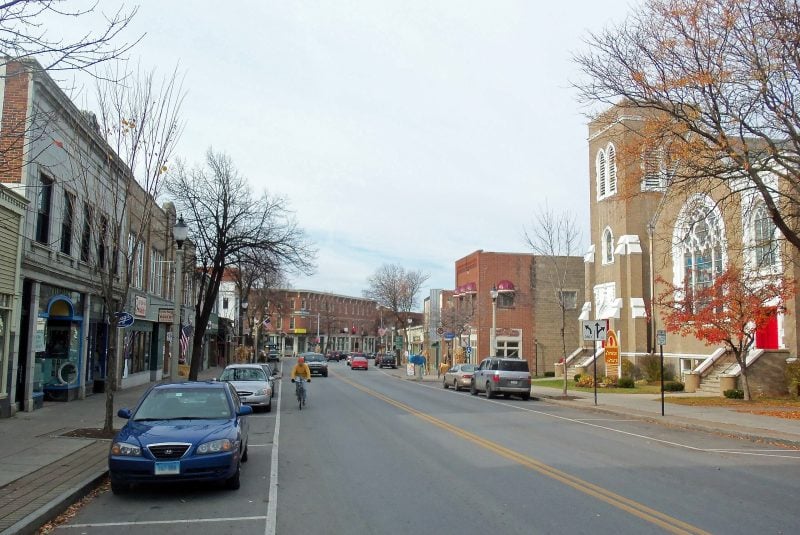
Bennington stands as the largest town in southern Vermont, offering residents substantial breathing room within a charming historic setting. The town consists of three distinct sections: Old Bennington, North Bennington, and Downtown Bennington, each with unique character.
The community receives a livability score of 63 out of 100 and ranks 57th among Vermont towns. Residents benefit from relatively low crime rates and good quality of life in the better neighborhoods.
Bennington provides access to numerous outdoor activities and local amenities. The town appeals to those seeking a safe, comfortable environment with plenty of recreational opportunities nearby.
The cost of living runs higher than some other Vermont locations, but many residents find the trade-offs worthwhile. The town’s three sections offer variety for different lifestyle preferences and housing needs.
11. Rutland
Rutland stands as Vermont’s third-largest city, located in the central part of the state. The city combines small-town charm with urban amenities, making it attractive to diverse residents.
Downtown Rutland features a bustling area filled with restaurants, cafes, shops, and entertainment venues. The surrounding neighborhoods maintain a peaceful, quiet atmosphere that contrasts nicely with the active city center.
The city has earned recognition for its quality of life from various publications and organizations. Rutland ranked 72nd nationally in a recent survey of cities offering great value for residents.
Housing costs remain reasonable compared to many Vermont locations. The area offers good access to outdoor recreation opportunities throughout the region.
Rutland provides essential services and amenities that larger cities offer while maintaining Vermont’s characteristic community feel.
10. Shelburne
Shelburne stands out as one of Vermont’s premier suburban communities in Chittenden County. The town maintains a population of approximately 7,600 residents according to recent census data.
The community ranks highly for livability and quality of life factors. Educational attainment reaches impressive levels with 87% of residents holding higher education degrees.
Housing costs reflect the area’s desirability with median home prices around $647,110. This figure exceeds both state and national averages significantly.
Shelburne offers strong public safety ratings and quality educational opportunities. The town provides excellent amenities while maintaining its small-town character.
The location provides convenient access to major commuter routes. Residents benefit from proximity to Burlington while enjoying a quieter suburban lifestyle.
BestPlaces rankings consistently place Shelburne among Vermont’s top communities for overall livability.
9. Colchester
Colchester sits in Chittenden County with a population of 17,570 residents. The town offers a sparse suburban feel where most residents own their homes.
Lake Champlain borders one side of this sprawling community. Several state and city parks are within walking distance for outdoor enthusiasts.
The town provides excellent outdoor recreation opportunities and maintains a vibrant community atmosphere. Colchester has earned recognition as one of the best places to live in Vermont.
Residents enjoy numerous restaurants and parks throughout the area. The cost of living index remains relatively low compared to other towns in the region.
Colchester sits just five minutes from downtown Burlington and the University of Vermont. This proximity provides access to urban amenities while maintaining a quieter residential environment.
The town features diverse neighborhoods with varying home values and quality of life indicators.
8. Williston
Williston stands as one of Vermont’s most desirable communities with a population of 10,098 residents. Located in Chittenden County between Burlington and St. Albans, it offers convenient access to major cities while maintaining small-town charm.
The town provides residents with a sparse suburban feel where most people own their homes. This creates stable neighborhoods with strong community ties.
Williston features numerous restaurants, coffee shops, and parks that enhance daily life. The area combines rural charm with suburban convenience, making it attractive to families and professionals.
Home prices in Williston exceed Vermont’s state average of $260,894, reflecting the area’s desirability. The town’s excellent schools contribute to its family-friendly reputation.
The community benefits from beautiful landscapes and a tranquil atmosphere. Its proximity to Lake Champlain’s eastern shore adds to the scenic appeal that draws residents to this growing Vermont town.
7. Essex Junction
Essex Junction stands out as one of Vermont’s most desirable communities. This small town in Chittenden County houses approximately 9,258 residents.
The area combines quintessential New England charm with modern amenities. Historic downtown areas date back to the 1800s, providing authentic Vermont character.
Essex Junction offers strong economic advantages. The typical household earns $76,845 annually, exceeding the national median of $67,500. The poverty rate sits at 8.2%, significantly below national averages.
Recreational opportunities abound throughout the year. The Champlain Valley Exposition hosts various events and activities for residents.
The town’s location between the Green Mountains and Lake Champlain provides scenic beauty and outdoor recreation access. Combined Essex and Essex Junction areas maintain median home prices around $450,000.
Educational opportunities and low crime rates make Essex Junction particularly attractive to families seeking quality Vermont living.
6. Barre
Barre stands as Vermont’s granite capital, known worldwide for its high-quality stone quarries. The city has a rich industrial heritage that shaped its character and architecture.
The downtown area features historic buildings constructed from local granite. Residents enjoy affordable housing costs compared to larger Vermont cities.
Barre offers solid public schools and community programs for families. The city maintains several parks and recreational facilities throughout the area.
The Hope Cemetery showcases elaborate granite sculptures and monuments created by local artisans. This unique attraction draws visitors from across the region.
Barre provides easy access to outdoor activities like hiking and skiing in nearby mountains. The city sits within driving distance of Montpelier and other central Vermont destinations.
Local restaurants and shops support the community’s economy. The annual festivals celebrate the city’s granite heritage and bring residents together.
5. Middlebury
Middlebury embodies the quintessential New England town with its white-spired church and scenic Otter Creek. Main Street features quaint stores and art galleries that attract both residents and visitors.
The median home price sits at $294,300, which exceeds Vermont’s state average of $260,894. Home appreciation has increased 7.8% in the past year, indicating a strong housing market.
Middlebury College adds cultural vibrancy and educational opportunities to the community. The town balances small-town charm with access to arts, dining, and recreational activities.
Residents enjoy outdoor recreation opportunities throughout the seasons. The town’s location provides easy access to skiing, hiking, and other Vermont outdoor pursuits.
The community offers a blend of year-round residents and seasonal visitors. Local amenities support both daily needs and leisure activities in this well-regarded Vermont destination.
4. Stowe
Stowe stands as Vermont’s “Ski Capital of the East” with a population just over 5,000 residents. The town sits in Lamoille County against the backdrop of the Green Mountains.
This mountain town offers residents a sparse suburban feel where most people own their homes. The community features numerous bars, restaurants, and coffee shops that create a vibrant local scene.
Stowe provides outdoor enthusiasts with year-round recreation opportunities. Winter brings world-class skiing and snowshoeing, while summer offers hiking and mountain activities.
The town combines small-town charm with convenient amenities typically found in larger cities. Residents enjoy access to employment opportunities without dealing with urban congestion.
Stowe ranks highly for quality of life and livability among small American towns. The area receives “Very High” ratings for amenities, education, health services, and housing options.
3. Montpelier
Vermont’s capital city offers residents an exceptional quality of life in a compact, walkable setting. Montpelier stands out as one of the smallest state capitals in America, creating an intimate community atmosphere.
The city excels in employment opportunities with a strong job market rating. Government positions provide stability, while local businesses contribute to economic diversity.
Education ranks highly in Montpelier, with well-regarded public schools serving families. The commitment to academic excellence reflects the community’s values and priorities.
Montpelier’s neighborhoods vary significantly in character and home values. The downtown area features historic architecture and convenient amenities within walking distance.
Housing costs reflect the city’s desirability, though options exist across different price ranges. The real estate market remains active due to consistent demand from professionals and families seeking Vermont’s capital city lifestyle.
2. South Burlington
South Burlington consistently ranks among Vermont’s top places to live. The city has earned recognition on Fortune’s list of the 50 best places for families two years running.
Low crime rates define the community’s safety profile. The public school system receives high marks from residents and education rankings.
Natural beauty surrounds the area with easy access to outdoor recreation. The city sits adjacent to Burlington, providing urban amenities while maintaining its own distinct character.
Housing costs remain more reasonable compared to many desirable locations. Local amenities and entertainment options serve residents well without requiring long commutes.
The combination of safety, schools, and scenery attracts families looking to establish roots. South Burlington offers small-town charm with access to larger city resources nearby.
1. Burlington

Burlington stands as Vermont’s largest city and cultural hub. The city sits on the shores of Lake Champlain with stunning mountain views.
Residents enjoy a vibrant downtown area filled with local restaurants, shops, and breweries. The Church Street Marketplace serves as the heart of the city’s social scene.
Burlington offers excellent outdoor recreation opportunities. Lake Champlain provides boating, swimming, and waterfront activities year-round.
The city maintains strong safety ratings compared to national averages. South Burlington and Burlington consistently rank among the nation’s safest places according to recent safety reports.
Housing costs reflect Burlington’s desirability as Vermont’s premier city. Neighborhoods vary significantly in character and home values throughout the area.
The University of Vermont brings energy and cultural events to the community. This creates a diverse population mixing students, professionals, and long-term residents.
Burlington provides urban amenities while maintaining Vermont’s small-town charm.
Key Factors That Make Vermont Cities Desirable
Vermont cities attract residents through affordable housing markets, abundant recreational opportunities, and tight-knit communities that prioritize quality of life. These elements combine to create environments where families and professionals can thrive while maintaining connection to both nature and neighbors.
Cost of Living Considerations
Vermont cities offer competitive housing markets compared to neighboring New England states. Median home prices in places like Essex Junction hover around $450,000, while annual incomes typically reach $82,000.
Property taxes remain reasonable relative to the quality of public services provided. Most Vermont communities maintain excellent school systems without the premium costs found in urban areas.
Utility costs stay manageable due to the state’s focus on renewable energy initiatives. Many residents benefit from lower heating expenses through efficient home designs and local energy programs.
Healthcare costs align with national averages while providing access to quality medical facilities. Vermont’s rural nature keeps many daily expenses lower than metropolitan areas.
Food costs vary by location, but farmer’s markets and local agriculture provide affordable fresh produce options. Many communities support local businesses that offer competitive pricing on everyday goods.
Access to Nature and Outdoor Activities
The Green Mountains provide year-round recreation within minutes of most Vermont cities. Skiing, hiking, and mountain biking trails connect directly to residential neighborhoods.
Lake Champlain offers water sports and fishing opportunities for western Vermont communities. Swimming, boating, and lakefront activities remain accessible throughout warmer months.
Winter sports infrastructure includes numerous ski resorts and cross-country trail systems. Many cities maintain public skating rinks and sledding hills for family recreation.
State parks and forests surround most communities, providing camping and wildlife observation opportunities. Trail networks connect towns and offer safe walking and cycling routes.
Local recreation departments organize seasonal activities like maple sugaring tours and harvest festivals. These programs strengthen community bonds while celebrating Vermont’s agricultural heritage.
Community and Lifestyle
Vermont cities maintain small-town atmospheres even in larger communities like Burlington. Neighbors know each other and participate actively in local governance and community events.
Cultural amenities include local theaters, art galleries, and music venues that showcase regional talent. Farmers markets and craft fairs occur regularly throughout growing seasons.
Progressive values characterize most Vermont communities, with strong environmental consciousness and social responsibility. Local businesses prioritize sustainability and community support.
Educational opportunities extend beyond excellent public schools to include libraries, community colleges, and adult learning programs. Many cities host lecture series and workshops on diverse topics.
Local restaurants emphasize farm-to-table dining using ingredients from nearby producers. Craft breweries and specialty food shops reflect Vermont’s artisanal food culture and support local agriculture.
Comparing Urban and Rural Living in Vermont
Vermont’s urban centers offer professional opportunities and cultural amenities, while rural areas provide mountain access and tight-knit communities. Each lifestyle appeals to different priorities and life stages.
Benefits of Urban Areas
Burlington stands as Vermont’s largest city with approximately 45,000 residents. The city provides access to the University of Vermont, Fletcher Allen Health Care, and numerous tech companies.
Urban areas typically offer higher median incomes. Burlington residents earn around $50,000 annually compared to rural areas averaging $35,000-$40,000.
Public transportation exists primarily in Burlington through Green Mountain Transit. Bus routes connect downtown to surrounding neighborhoods and the university campus.
Cultural attractions include the Flynn Center for Performing Arts, ECHO Leahy Center for Lake Champlain, and multiple craft breweries. Church Street Marketplace provides year-round shopping and dining options.
Healthcare access improves significantly in urban areas. The University of Vermont Medical Center offers specialized services unavailable in rural communities.
Job diversity spans technology, healthcare, education, and finance sectors. Burlington’s unemployment rate typically runs 1-2% lower than rural counties.
Rural Tranquility and Small-Town Appeal
Housing costs drop substantially outside urban centers. Rural Vermont homes average $350,000 compared to Burlington’s $450,000 median price.
Small towns like Stowe, Manchester, and Woodstock offer direct access to ski resorts and hiking trails. Residents can reach multiple mountains within 20-30 minutes.
Community engagement runs deeper in rural areas. Town meetings, volunteer fire departments, and local festivals create stronger neighborhood bonds.
Privacy and space define rural living. Properties often include multiple acres with minimal neighbors, appealing to those seeking solitude.
Agriculture remains prominent in rural communities. Farmers markets, maple syrup operations, and organic farms provide local food sources and seasonal employment.
Commute times to urban jobs can exceed one hour during winter months. Limited cell service and slower internet speeds affect remote work capabilities.





